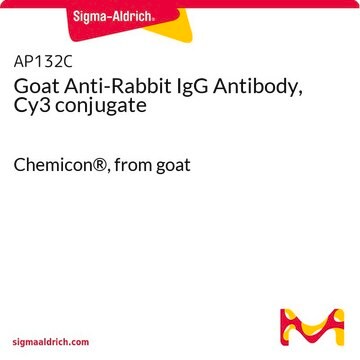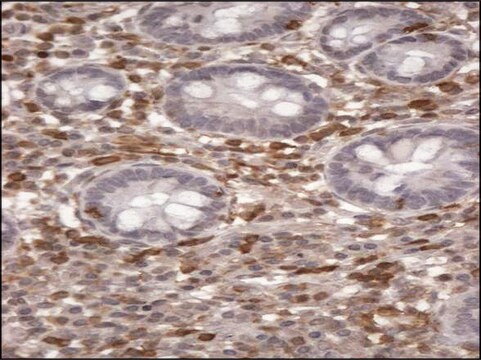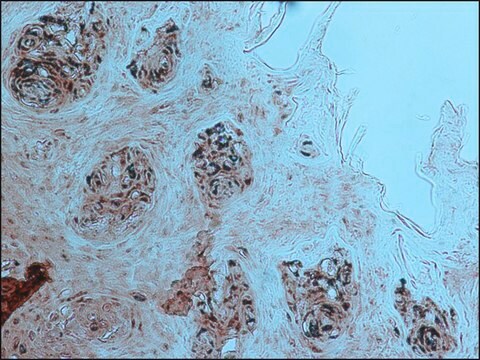MABT886
Anti-VE-Cadherin Antibody, clone Vli37
culture supernatant, clone Vli37, from rabbit
Synonym(s):
Cadherin-5, CD144, Vascular endothelial cadherin, VE-Cad, VE-cadherin, VEcad
About This Item
Recommended Products
biological source
rabbit
Quality Level
antibody form
culture supernatant
antibody product type
primary antibodies
clone
Vli37, monoclonal
species reactivity
bovine, mouse
species reactivity (predicted by homology)
rat (based on 100% sequence homology)
technique(s)
immunocytochemistry: suitable
immunohistochemistry: suitable (paraffin)
western blot: suitable
isotype
IgG
NCBI accession no.
UniProt accession no.
shipped in
dry ice
target post-translational modification
unmodified
Gene Information
mouse ... Cdh5(12562)
General description
Specificity
Immunogen
Application
Cell Structure
Adhesion (CAMs)
Western Blotting Analysis: An 1:2,000 dilution from a representative lot detected VE-cadherin expression in lysastes from mouse lung tissue, mouse brain endothelial bEnd.3 cells, and bovine aortic endothelial GM7372 cells (Courtesy of Dr. Volkhard Lindner, Maine Medical Center Research Institute, Scarborough, ME).
Immunohistochemistry Analysis: An 1:250-5,000 dilution from a representative lot detected VE-cadherin immunoreactivity in formalin-fixed, paraffin-embeded mouse lung, aorta, and liver tissue sections (Courtesy of Dr. Volkhard Lindner, Maine Medical Center Research Institute, Scarborough, ME).
Immunocytochemistry Analysis: An 1:500-5,000 dilution from a representative lot detected VE-cadherin immunoreactivity in bovine aortic endothelial GM7372 cells (Courtesy of Dr. Volkhard Lindner, Maine Medical Center Research Institute, Scarborough, ME).
Quality
Western Blotting Analysis: An 1:500 dilution of this antibody detected VE-Cadherin in 10 µg of mouse lung tissue lysate.
Target description
Physical form
Storage and Stability
Handling Recommendations: Upon receipt and prior to removing the cap, centrifuge the vial and gently mix the solution. Aliquot into microcentrifuge tubes and store at -20°C. Avoid repeated freeze/thaw cycles, which may damage IgG and affect product performance.
Other Notes
Disclaimer
Not finding the right product?
Try our Product Selector Tool.
Storage Class Code
10 - Combustible liquids
WGK
WGK 2
Certificates of Analysis (COA)
Search for Certificates of Analysis (COA) by entering the products Lot/Batch Number. Lot and Batch Numbers can be found on a product’s label following the words ‘Lot’ or ‘Batch’.
Already Own This Product?
Find documentation for the products that you have recently purchased in the Document Library.
Our team of scientists has experience in all areas of research including Life Science, Material Science, Chemical Synthesis, Chromatography, Analytical and many others.
Contact Technical Service








